KVLP.com domain is for sale :https://www.domaineasy.com/buy-domain/kvlp.com
The Power of Durian
The “power of durian” can be interpreted in a few different ways

depending on what you’re referring to — its nutritional value,
cultural significance, or even its controversial impact. Here’s a
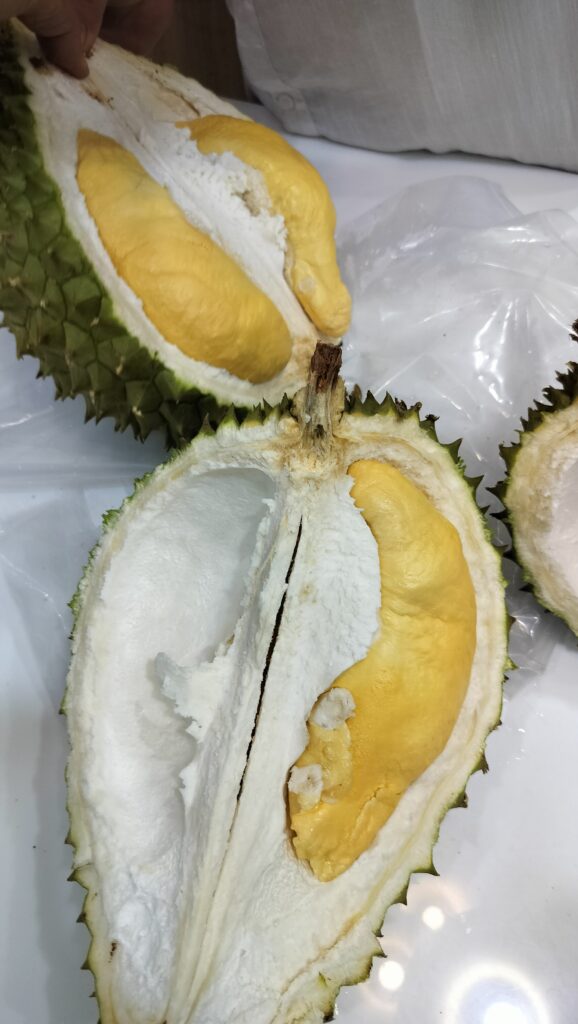
breakdown of the different “powers” of durian:
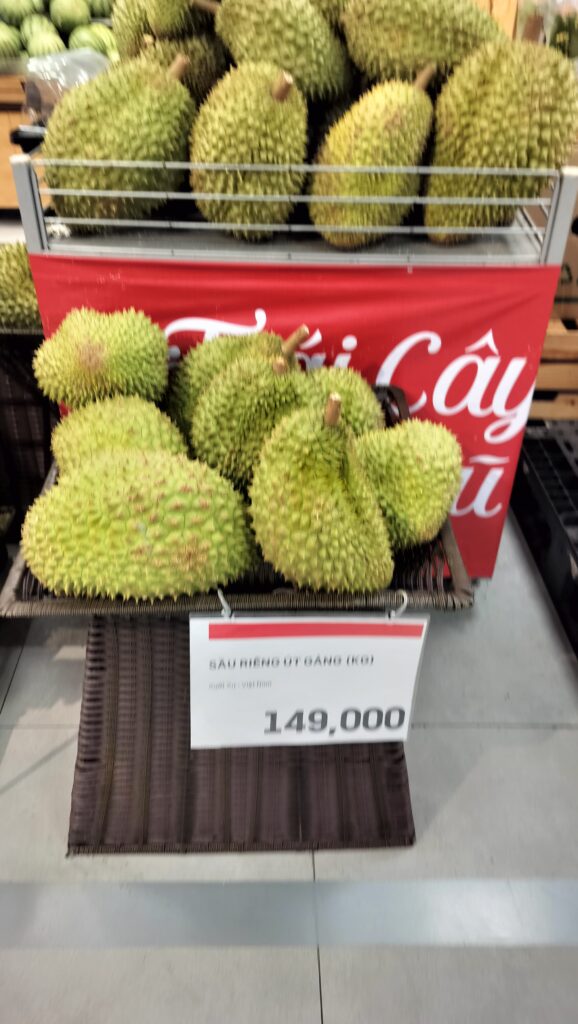
- Nutritional Power
Durian is an energy-dense fruit with many health benefits:
High in Energy: Around 150–160 kcal per 100g, due to its high fat and
carbohydrate content.
Rich in Fiber: Aids digestion and promotes gut health.
Vitamins & Minerals:
Vitamin C (boosts immune system)
B Vitamins (energy production, brain health)
Potassium (supports heart health and blood pressure regulation)
Natural Sugars: Provides a quick energy boost.
Antioxidants: Help reduce inflammation and may protect against chronic diseases.
- Aphrodisiac Reputation
In some Southeast Asian cultures, durian is believed to have
libido-enhancing properties. There’s even a saying:
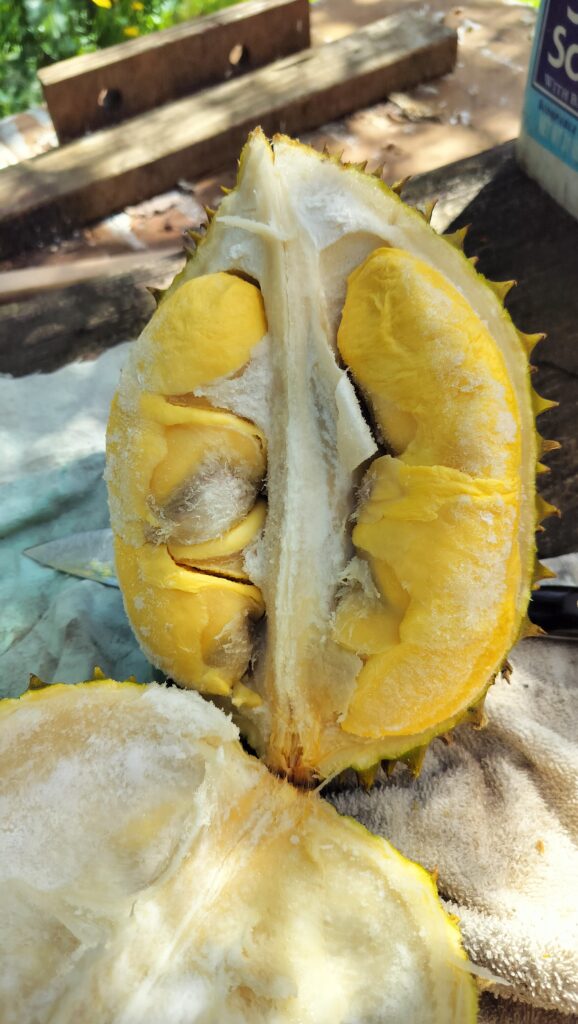
“When the durians fall, the sarongs fly.”
While not scientifically proven, it’s thought to increase body heat
and blood flow.
- Cultural Power
Considered the “King of Fruits” in many Southeast Asian countries.
A symbol of wealth and status — premium durians like Musang King can
sell for very high prices.
Used in festivals, rituals, and as diplomatic gifts.
- Controversial Power (Smell!)
Durian’s odor is powerful enough to get it banned from hotels, planes,
and public transport.
Despite this, fans say the taste is heavenly once you get past the
smell — “smells like hell, tastes like heaven.”
Would you like a deep dive into its nutritional breakdown, a cultural
story involving durian, or even how it compares to other
“superfruits”?ink&utm_campaign=sig-email&utm_content=webmail>
Virus-free.www.avg.com
<http://www.avg.com/email-signature?utm_medium=email&utm_source=link&utm_campaign=sig-email&utm_content=webmail>
<#DAB4FAD8-2DD7-40BB-A1B8-4E2AA1F9FDF2>
What is Durian
Durian is a tropical fruit known for its large size, spiky outer shell, and strong smell. It’s native to Southeast Asia and often referred to as the “king of fruits.” Here’s a quick breakdown:
Appearance:
- Size: Typically the size of a football, can weigh 1–3 kg (2–7 lbs).
- Exterior: Covered in thick, hard spikes.
- Interior: Contains several large seeds surrounded by creamy, custard-like flesh.
Taste & Smell:
- Smell: Extremely pungent — people often describe it as a mix of rotten onions, turpentine, and raw sewage. Because of this, it’s banned in many public places (like hotels and subways) in parts of Asia.
- Taste: Polarizing. Some love it for its sweet, rich, almond-like flavor; others find it unbearable.
Culinary Use:
- Eaten raw or used in sweet and savory dishes (e.g., durian ice cream, pastries, or curry).
- Popular in countries like Malaysia, Thailand, Indonesia, and the Philippines.
Nutritional Facts:
- High in calories, carbohydrates, fiber, and healthy fats.
- Contains vitamins like vitamin C and B-complex, and minerals like potassium and magnesium.
How to Make Your Indoor Jade Plant Bloom
How to Make Your Indoor Jade Plant Bloom: A Complete Guide for Houseplant Enthusiasts
Jade plants (Crassula ovata) are among the most beloved indoor plants across the globe. With their thick, glossy leaves and tree-like structure, they add a touch of elegance to any home or office. Known for their resilience and easy-care nature, these houseplants often become heirlooms, passed down through generations. But while jade plants are well-known for their lush green foliage, did you know they can also flower indoors?
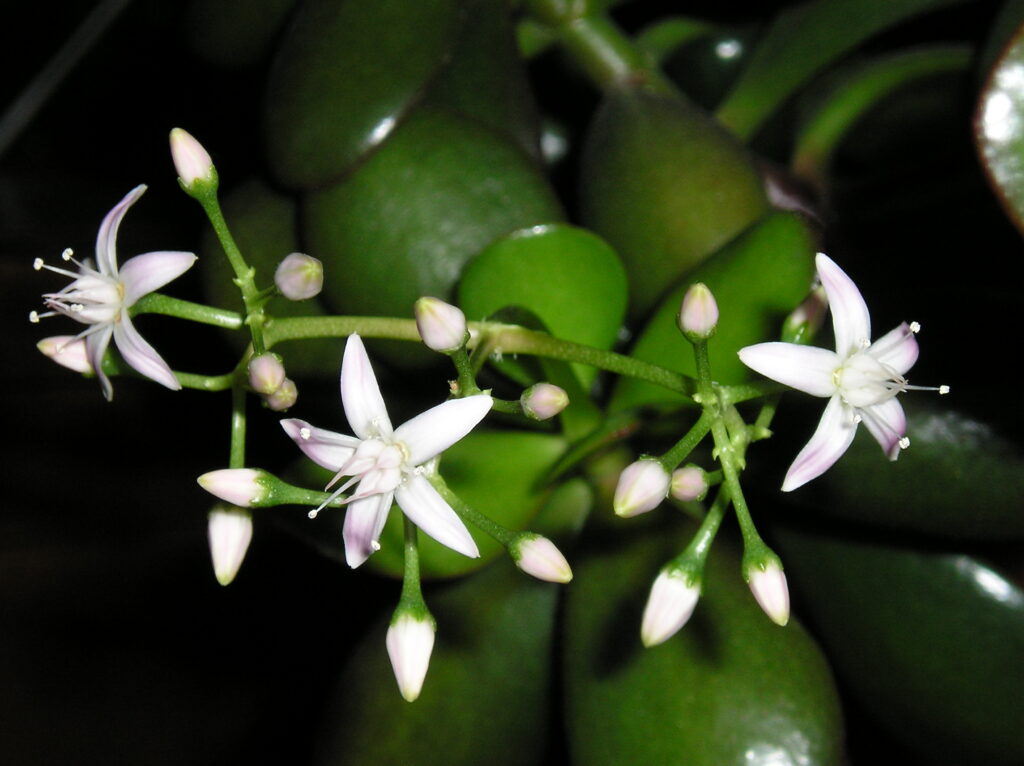
Yes, that’s right. Under the right conditions, your indoor jade plant can reward you with delicate, star-shaped white or pink blossoms. While achieving blooms indoors is a rare feat, it’s certainly possible—and incredibly satisfying. If you’re an indoor gardening enthusiast or someone looking to purchase a flowering succulent, this blog post is for you.
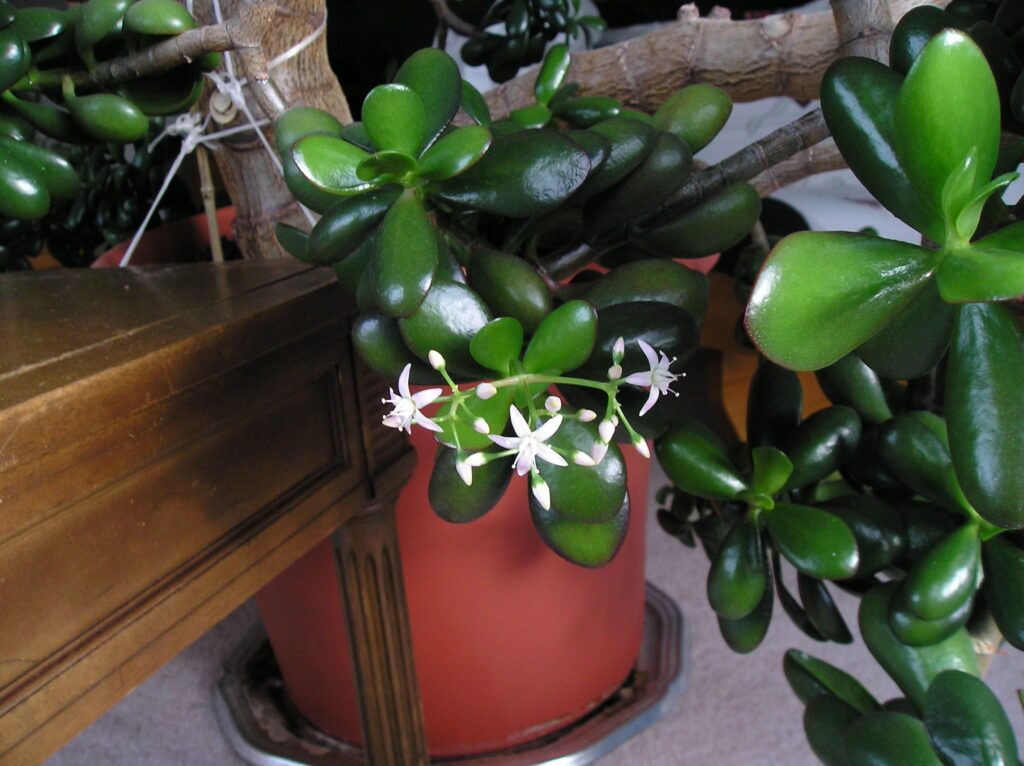
In this ultimate guide, we’ll explore how to encourage jade plants to bloom indoors. You’ll learn the specific requirements in terms of light, temperature, watering, stress conditions, and more. Whether you’re a novice plant parent or an experienced succulent collector, this comprehensive post will help you take your jade plant care to the next level.
Why Don’t Most Jade Plants Flower Indoors?
The biggest misconception about jade plants is that they’re simply non-flowering houseplants. This isn’t true. Jade plants do flower, but only when certain environmental cues are met. These include:
- Long hours of bright, direct sunlight
- Cooler nighttime temperatures
- Drier soil during fall and winter
- A plant that’s at least 3 to 4 years old
Indoor environments often lack some or all of these elements, which is why jade plants bloom more readily outdoors. However, with careful adjustments and patience, indoor blooms are possible.
What Do Jade Plant Flowers Look Like?
Jade plant blooms are a true reward. Here’s what to expect:
- Color: Soft white or pink
- Shape: Star-like with 5 petals
- Scent: Mild, sweet aroma
- Location: At the tips of mature stems
- Bloom time: Late winter to early spring (usually December–March)
They form in clusters, creating a cloud of delicate beauty—like a celebration of your plant parenting skills.
Best Locations in the Home for Jade Plants to Bloom
Choosing the right spot in your home can make a huge difference in whether your jade plant (Crassula ovata) simply survives—or actually thrives and blooms. Since jade plants require a combination of bright, direct sunlight, cool nighttime temperatures, and airflow, some areas of your home are better suited than others.
Here’s a closer look at ideal indoor locations to position your jade plant for the best chances of flowering:
1. South-Facing Window Room
This is typically the best location in most homes for growing flowering indoor succulents like jade plants.
Pros:
- Maximum Sunlight Exposure: South-facing windows receive the strongest and most consistent sunlight throughout the day—ideal for triggering bloom production in jade plants.
- Stable Environment: These rooms often have steady indoor temperatures, especially if insulated well.
- Ideal for Winter Resting Phase: Even in colder months, south-facing windows still provide enough daylight to simulate natural conditions that jade plants need before blooming.
Cons:
- Risk of Overheating in Summer: Intense summer sunlight can lead to leaf scorching or sunburn, especially if the plant is too close to the window glass.
- Dry Soil Too Fast: The potting mix may dry out more quickly, so watering schedules should be monitored closely.
Tip: During the summer months, pull the plant back slightly or use sheer curtains to diffuse harsh midday rays.
SEO Keywords Used: best window for houseplants, south-facing window jade plant, indoor sun exposure for succulents
2. Enclosed Porch or Sunroom
An enclosed porch or sunroom is another excellent location for jade plants, especially for larger specimens that benefit from space and airflow.
Pros:
- Abundant Natural Light: With large windows or glass walls, these spaces offer nearly 360-degree light exposure—ideal for jade plants that need bright, direct light to bloom.
- Better Air Circulation: Good airflow mimics natural outdoor conditions, helping to prevent issues like mold or fungal infections from stagnant air.
- Outdoor-Like Environment: These rooms offer the next best thing to outdoor conditions, helping mimic the jade plant’s native South African climate.
Cons:
- Unpredictable Temperature Swings: Depending on how well the space is insulated, you may need to manually control temperature—especially in winter. Space heaters or portable fans might be required.
- Humidity Management: Enclosed rooms may sometimes trap moisture, so a dehumidifier may be needed to keep the environment dry and bloom-friendly.
Tip: During fall, allow the nighttime temperature to drop slightly in this room to replicate the seasonal shift that encourages flowering.
SEO Keywords Used: jade plant sunroom location, succulent care in enclosed porch, houseplant light and temperature balance
3. Unused Guest Room with a Window
You might not think of it, but an unused guest room with a good window setup can offer the perfect quiet zone for a jade plant to bloom.
Pros:
- Cooler Night Temperatures: Unused rooms often get cooler at night—especially if they’re kept shut or not climate-controlled—mimicking the temperature drop jade plants need to initiate blooming.
- Low Traffic Area: Since the room isn’t used daily, it limits the risk of accidental bumping or exposure to drafts and heating vents.
- Customizable Light Setup: You can easily set up grow lights on timers to ensure consistent 10–12 hours of light during fall and winter.
Cons:
- Insufficient Natural Light: Guest rooms may not always have ideal window placement or size, so supplementing with grow lights is essential.
- Out of Sight, Out of Mind: Since it’s not in a high-traffic area, you may forget to check the soil moisture, pests, or signs of stress.
Tip: Use full-spectrum LED grow lights and a digital thermometer to monitor light and temperature easily from your phone.
Additional Tips for Choosing the Right Room
- Keep the plant elevated: Place jade plants on plant stands or furniture to bring them closer to window height and airflow zones.
- Avoid HVAC vents: Don’t place jade plants directly in front of heaters, air conditioners, or air return ducts.
- Rotate your plant: Every 1–2 weeks, rotate the pot to ensure even light exposure and prevent lopsided growth.
- Use a rolling plant caddy: For flexibility, place your jade plant on a wheeled base so you can move it between optimal spots based on seasonal sun angles.

To make a jade plant bloom indoors, you need to replicate its natural blooming conditions found in its native habitat—South Africa. There, jade plants experience hot, dry summers and cooler, drier winters. This fluctuation in environmental conditions plays a major role in their flowering cycle.
Typically, jade plants bloom in late winter to early spring, following a rest period during fall. This rest period is critical—it signals to the plant that it’s time to shift from vegetative growth to reproduction (i.e., flowering).
Step-by-Step Guide: How to Get Your Jade Plant to Bloom Indoors
1. Wait for Maturity
Jade plants need to be at least 3 to 4 years old before they are capable of blooming. Even then, flowering is not guaranteed. Maturity indicators include:
- A woody trunk
- Slower growth
- Plant height between 3 to 6 feet
If your plant is still young or recently propagated, focus on nurturing strong roots and structure first.
2. Provide Intense, Direct Sunlight (8–12 Hours)
Jade plants are sun-lovers. To flower, they require 8 to 12 hours of direct sunlight per day. Indoors, this can be difficult to achieve naturally, so consider:
- Placing the plant near a south-facing window
- Using LED grow lights with full-spectrum light
Signs your jade is receiving enough light include:
- Red-tinged leaf edges
- Compact, upright growth
- Firm and glossy leaves
3. Water Less, Not More
Overwatering is the biggest jade plant killer—and also a flowering inhibitor. During the fall and winter months:
- Let the soil dry out completely between waterings
- Withhold water for 2–3 weeks during the rest period
- Avoid misting or placing in humid rooms
Tip: A mildly stressed plant is more likely to flower. Controlled water stress mimics seasonal drought and can stimulate blooming.
4. Drop the Night Temperature
Cool nights are essential for bloom initiation. Aim for 50°F to 60°F (10°C to 15°C) during the rest period (typically fall and early winter).
To achieve this indoors:
- Move your jade plant near a draft-free window in a cooler room
- Avoid placing it near heaters, vents, or radiators
The 10-degree difference between day and night is a strong cue for flower bud formation.
5. Use the Right Pot and Soil
Stress from being slightly rootbound can promote blooming, but this needs to be managed carefully.
- Use a breathable pot like unglazed ceramic or terracotta
- Ensure the pot has drainage holes
- Use a well-draining cactus or succulent mix
Avoid repotting right before or during the rest period, as it can interrupt the blooming process.
6. Respect the “Rest Period”
Though jade plants don’t go dormant like deciduous trees, they need a rest period from active growth. This rest period:
- Occurs in September to November
- Involves cooler temperatures, longer nights, and drier soil
- Lasts for 4–8 weeks
Don’t fertilize during this time. Resume light watering and feeding once buds appear or as spring approaches.
7. Practice Patience
Even if you follow every tip perfectly, your jade plant might still not bloom. That’s normal. Blooming is a complex response influenced by genetics, environment, and overall plant health.
Focus on maintaining optimal care, and treat blooming as a bonus. Remember: a healthy jade plant is a beautiful houseplant even without flowers.
What Do Jade Plant Flowers Look Like?
When a jade plant finally blooms indoors, you’ll be treated to clusters of small, star-shaped flowers. They are typically:
- White or pale pink
- Lightly fragrant
- Located at the tips of mature branches
- Blooming in December through February
Blooms usually last for a few weeks and then fade. You can trim off spent flowers to encourage new growth in spring.
Common Mistakes to Avoid
| Mistake | Why It’s a Problem |
| Overwatering | Leads to root rot and prevents flower formation |
| Inconsistent light | Interrupts the blooming cycle |
| Skipping rest period | Prevents the environmental signal needed for blooming |
| Using non-draining soil | Causes water retention, root stress, and poor overall health |
| Expecting young plants to bloom | Younger jade plants are focused on growth, not reproduction |
Why This Matters for Indoor Gardeners
For houseplant lovers, achieving indoor flowering in jade plants is not just about aesthetics—it’s a symbol of successful, attentive care. It’s also a strong selling point for succulent retailers and nursery businesses looking to appeal to knowledgeable plant parents.
Whether you’re nurturing your own plant or selling jade plants online, understanding and promoting indoor blooming adds a transactional benefit: plants grown with the potential to bloom may fetch higher prices and satisfy more dedicated buyers.
Final Thoughts
Growing jade plants indoors is already rewarding, thanks to their sculptural form and easygoing nature. But getting your jade plant to bloom? That’s next-level houseplant mastery.
To recap, indoor jade plant flowering is possible when you combine:
Maturity
Long hours of direct light
Cool nights
Reduced watering
A dedicated rest period
So, if you’ve got a mature jade plant basking in your sunniest window, don’t give up on those tiny blossoms just yet. With the right care, timing, and a bit of patience, you may just wake up one winter morning to find your jade plant has surprised you—with flowers.
FAQs
1: Can jade plants bloom indoors?
Yes, but it’s rare. They need intense light, cooler nights, a dry rest period, and maturity.
2: How old must a jade plant be before it blooms?
Usually at least 3–4 years old. Some may take longer depending on conditions.
3: Do I need grow lights to make my jade plant flower indoors?
If natural light is insufficient, especially in winter, grow lights can be very helpful.
4: What does a jade plant flower look like?
Small, star-shaped, white or pale pink flowers appearing in clusters at branch tips.
5: How often do jade plants bloom indoors?
If conditions are perfect, they may bloom annually in late winter or early spring.
Sleep Under the Jade Plant
I sleep under the Jade Plant…so cool and meditative
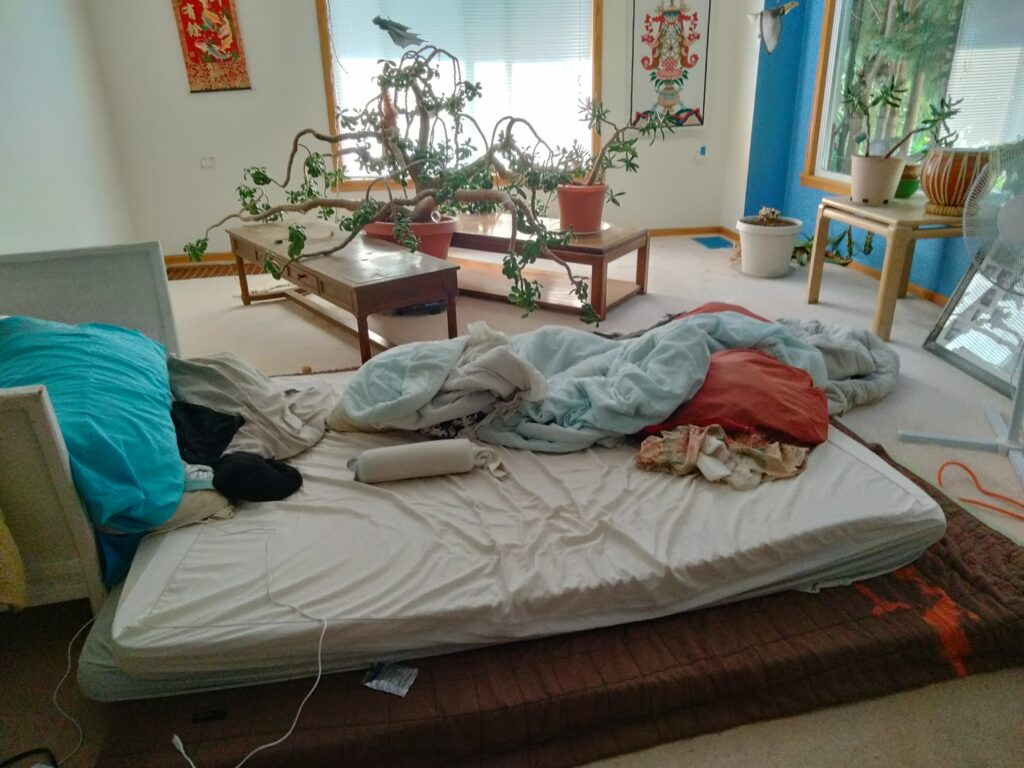
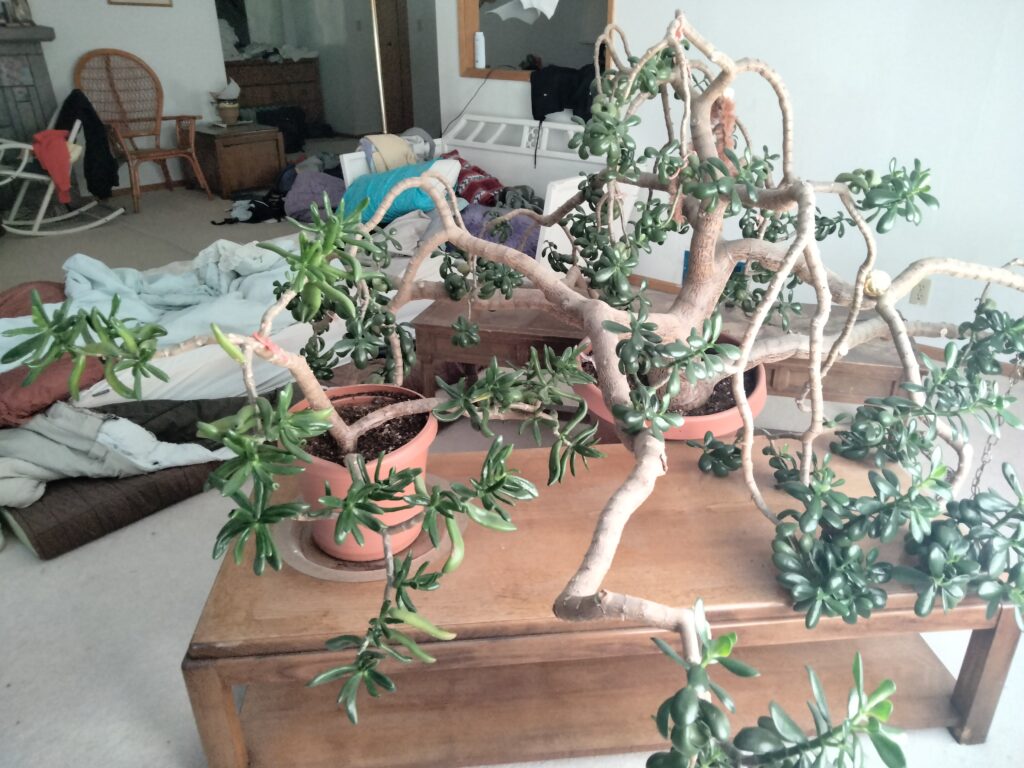
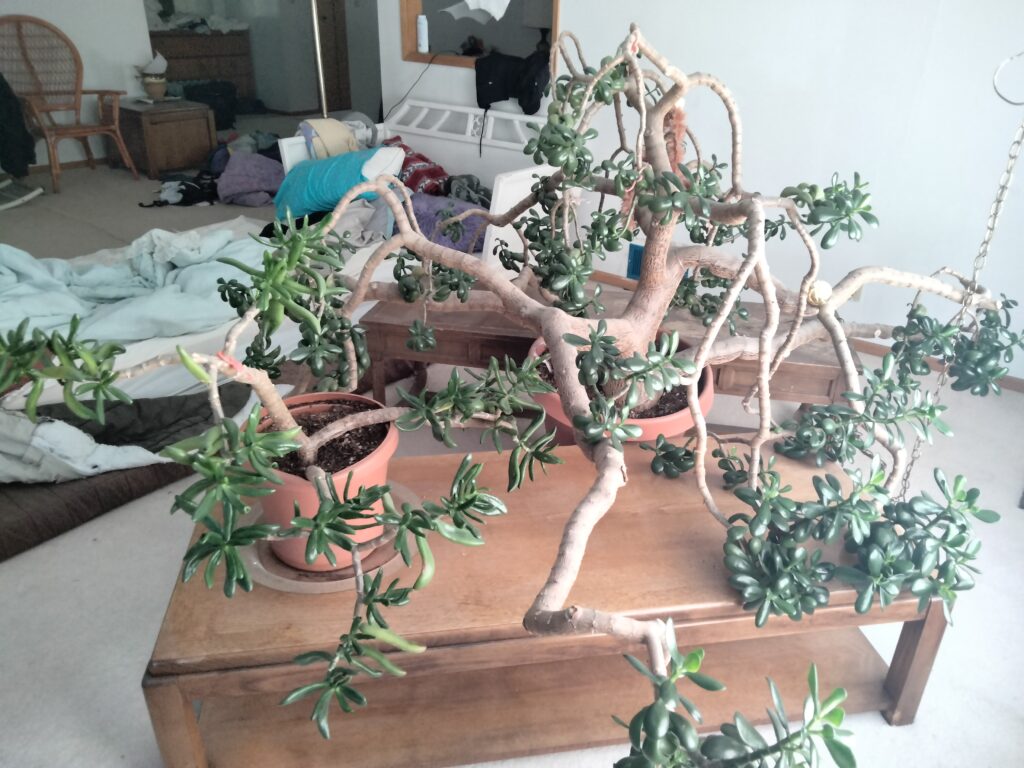
Washington Winemakers
Washington state is home to a thriving wine industry, with more than 900 wineries and more than 50,000 acres of vineyards. The state is known for its production of high-quality wines made from a variety of grapes, including Cabernet Sauvignon, Merlot, Syrah, Chardonnay, and Riesling. Washington’s wine industry is concentrated in the eastern part of the state, in the Columbia Valley AVA (American Viticultural Area). The region’s warm days and cool nights provide ideal growing conditions for grapes, and the state’s winemakers are known for producing wines that are full-bodied, complex, and well-balanced. Many wineries in Washington offer tastings and tours, and the state is home to several wine festivals and events throughout the year.
What is Watermelon Politics?
Watermelon Politics: Green On The Outside, Red On The Inside
It appears that “watermelon politics” is a phrase that has been used to describe

situations where someone or something appears to be one thing on the surface, but is actually something else underneath. In the context of the phrase “green on the outside, red on the inside,” it may be used to describe someone or something that appears to be environmentally friendly or progressive (green) on the surface, but is actually communist or socialist (red) in their beliefs or actions.
The phrase “watermelon politics” is not a widely used term, and its meaning may vary depending on the context in which it is used. It is important to consider the context and source of any information when evaluating its accuracy and reliability.
“watermelon politics” is a term used to describe individuals or organizations that present themselves as environmentally or socially progressive, but whose actions or policies do not align with their stated values or beliefs. The term is often used pejoratively to imply that these individuals or organizations are hypocritical or insincere in their claims of being environmentally or socially conscious. It is not clear where the term “watermelon politics” originated or how widely it is used. It is possible that it may be used more commonly in certain regions or political contexts.
Jade Plants
Jade plants, also known as Crassula ovata, are popular houseplants that are native to South Africa. They are known for their thick, glossy leaves and their ability to tolerate a wide range of growing conditions. Jade plants are easy to care for and can thrive in many different environments, making them a great choice for people who are new to gardening or who don’t have a lot of experience with houseplants.
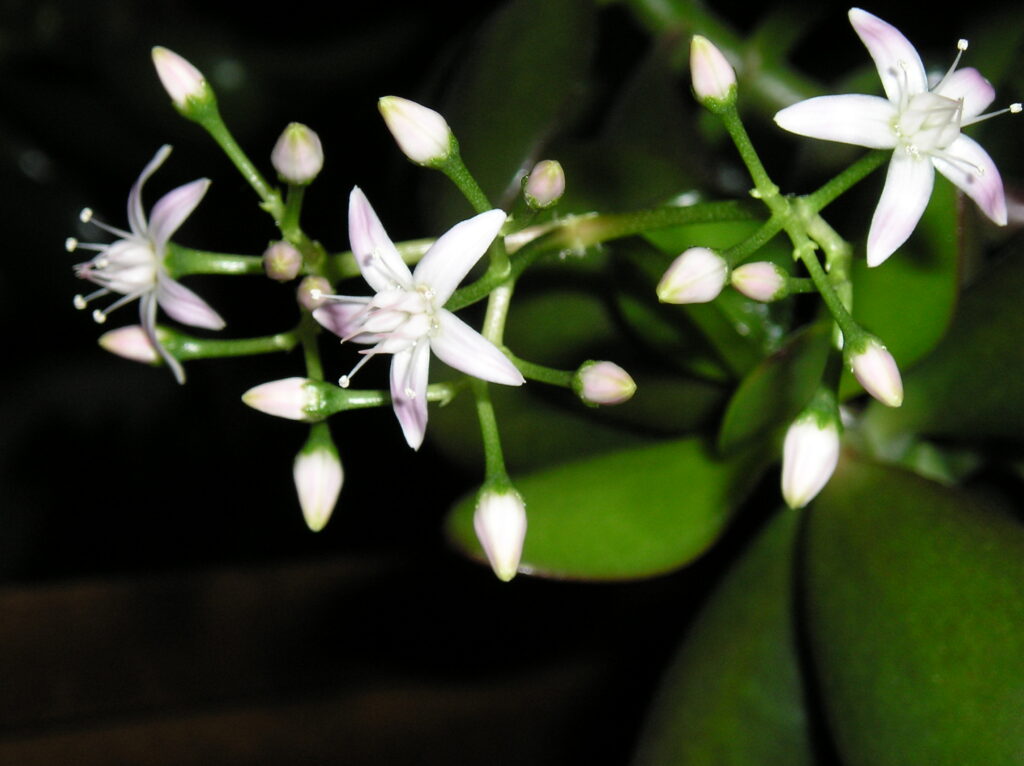

To care for a jade plant, place it in a location with bright, indirect light and water it regularly, allowing the soil to dry out slightly between waterings. It is also important to fertilize your jade plant every few months to provide it with the nutrients it needs to grow. In addition to these basic care tips, it is also important to keep your jade plant free of pests and to prune it regularly to encourage healthy growth.
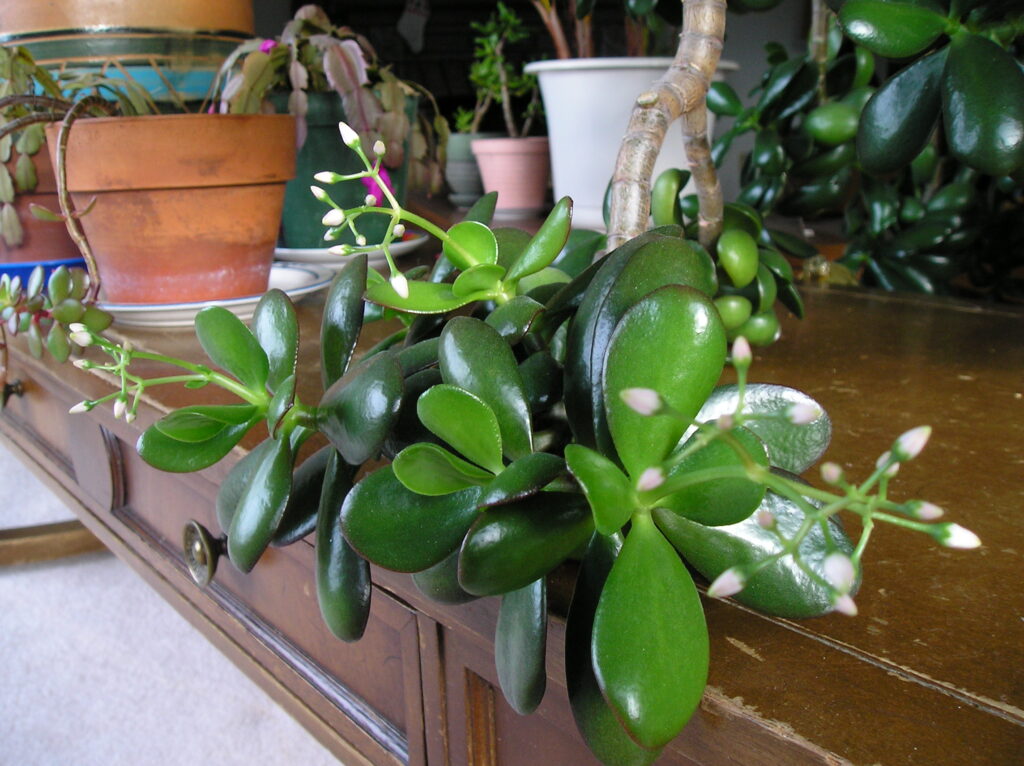

Jade plants, also known as Crassula ovata, are a type of succulent plant that is native to South Africa. They are popular houseplants because of their low maintenance and ability to thrive in a variety of lighting conditions. Jade plants have thick, fleshy leaves and stems that store water, which allows them to survive prolonged periods without water. They are typically grown in well-draining soil and prefer indirect sunlight or bright, indirect light. They can be prone to pests such as mealybugs and aphids, and it’s important to carefully monitor their watering to prevent over-watering or under-watering. With proper care, jade plants can live for many years and grow into large, lush plants.
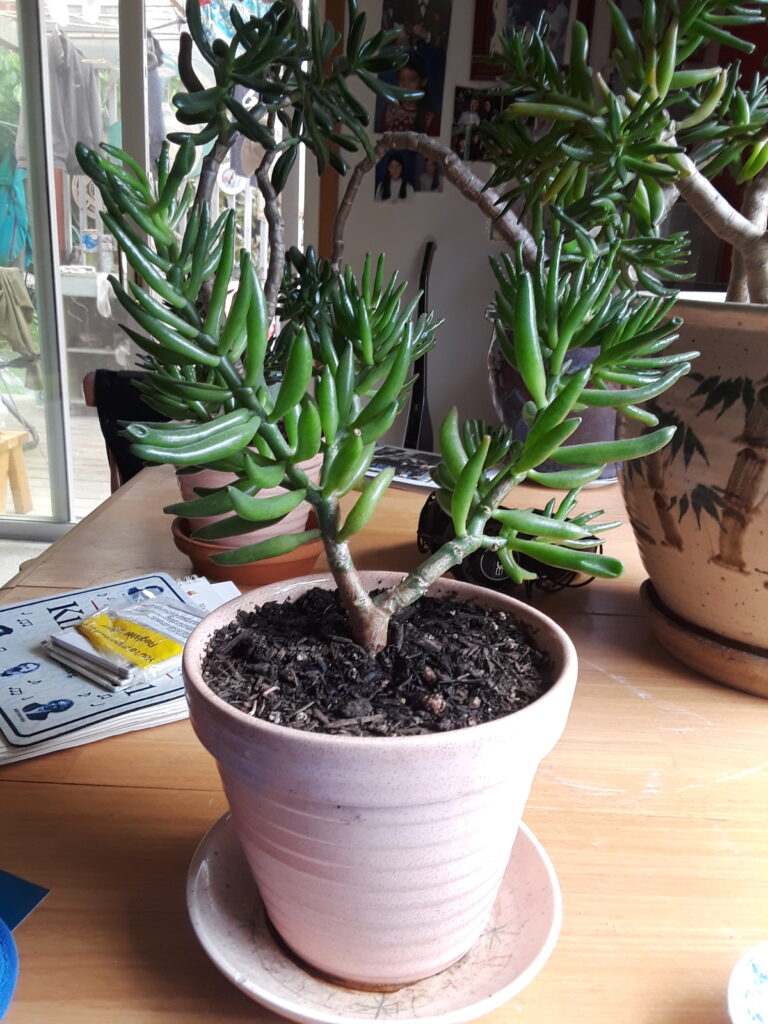
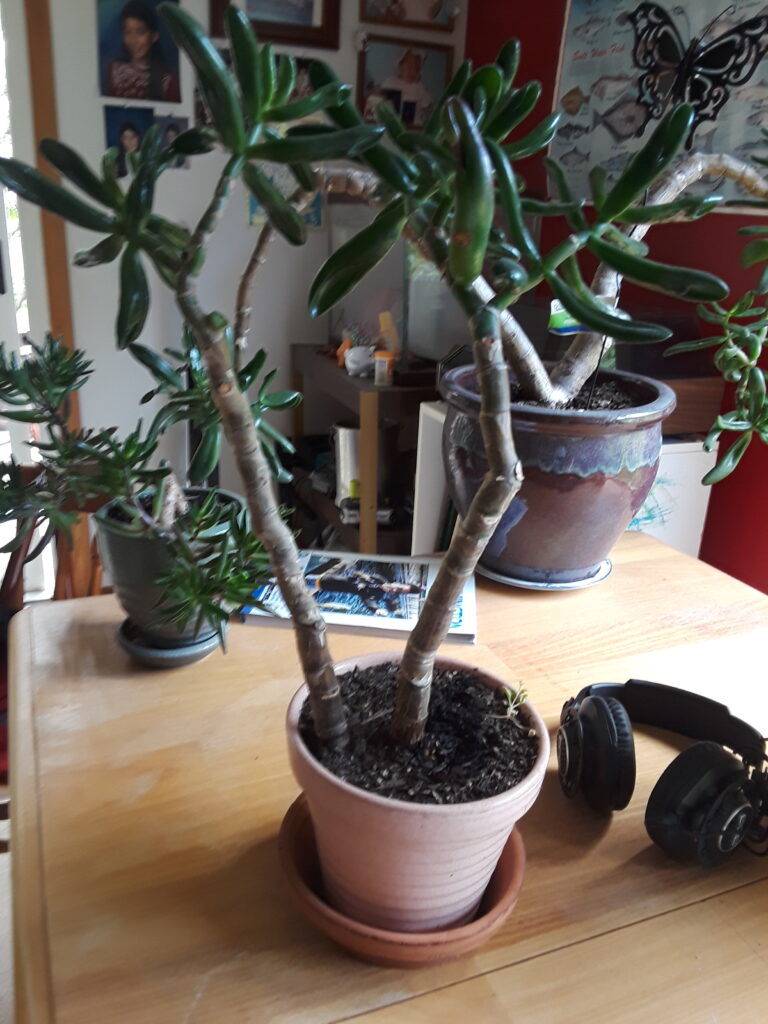
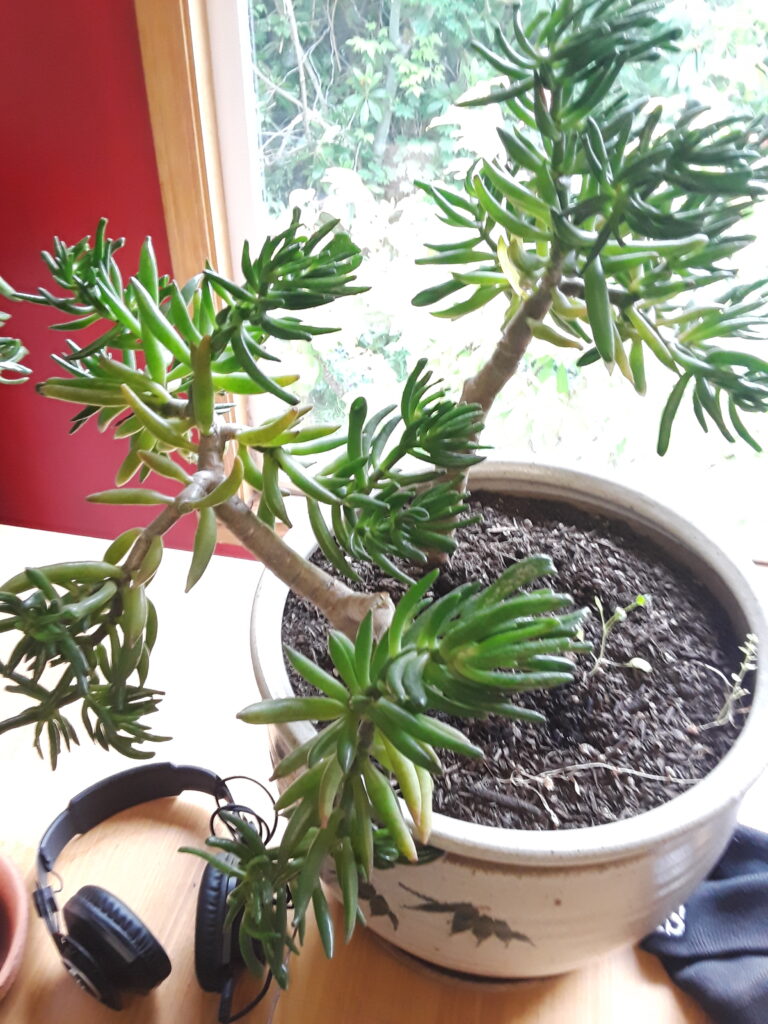
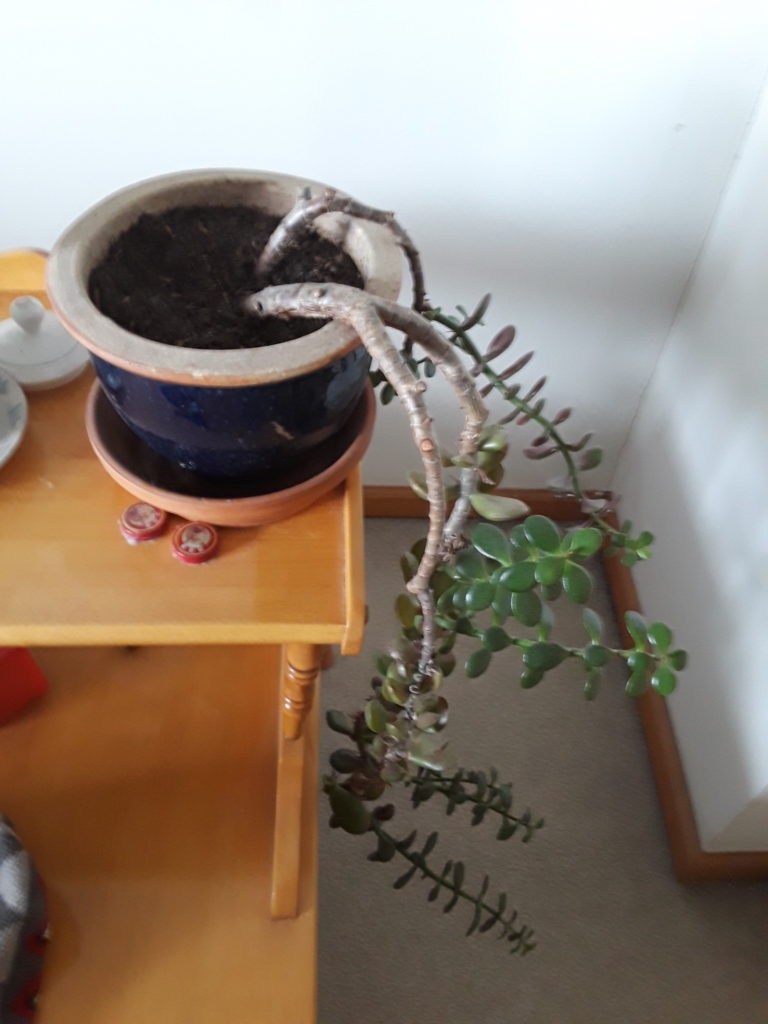
WashingtonWinemaker.com domain is for sale
WashingtonWinemakers.com domain is for sale
WatermelonPolitics.com domain for sale
WatermelonPolitics.com domain for sale